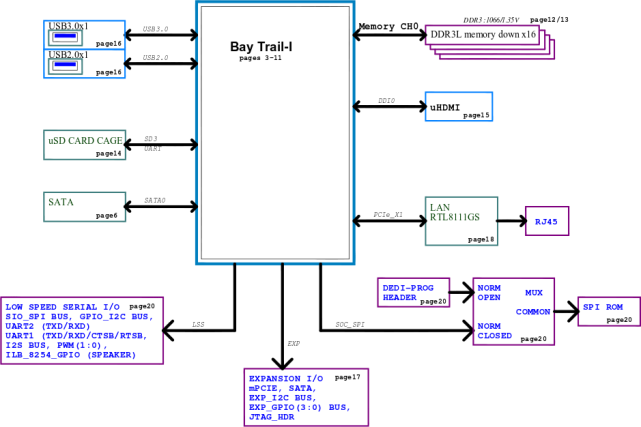MinnowBoard MAX (aka MinnowBoard2) is an embedded board powered by Intel Atom Bay-Trail-I E3815 (single core) or E3825 (dual core) processor, with 1 to 2GB RAM, SATA II, USB 3.0, Gigabit Ethernet ports, and more. The board currently officially supports four operating systems: Debian GNU/Linux, Linux built with the Yocto Project, Android 4.4, and Windows 8.1. One of its main selling point is the price as the single core version sells for $99, and the dual core version for $129, rivalling in price with equivalent ARM based development boards. It’s also an open source hardware board, and as it’s now about to ship, CircuitCo released all hardware files under a Creative Commons CC-BY-SA license, allowing anybody with the right skills to create a clone, or their own hardware.

Here are the files that have been released:
Schematics and PCB layout have been designed with Cadence Orcad and Allegro, so you’d need these tools to modify them. You can also open the Allegro files with Cadence Allegro FREE Viewer (Windows only).
All these files, and other documentation, can be found on MinnowBoard MAX page on eLinux.org. Single and dual core versions of the board can be pre-ordered on Mouser, Tigal (Europe), or Techno Disti. MinnowBoard MAX DUAL should ship shortly (Early September), and the single core board a little later.

Jean-Luc started CNX Software in 2010 as a part-time endeavor, before quitting his job as a software engineering manager, and starting to write daily news, and reviews full time later in 2011.
Support CNX Software! Donate via cryptocurrencies, become a Patron on Patreon, or purchase goods on Amazon or Aliexpress




